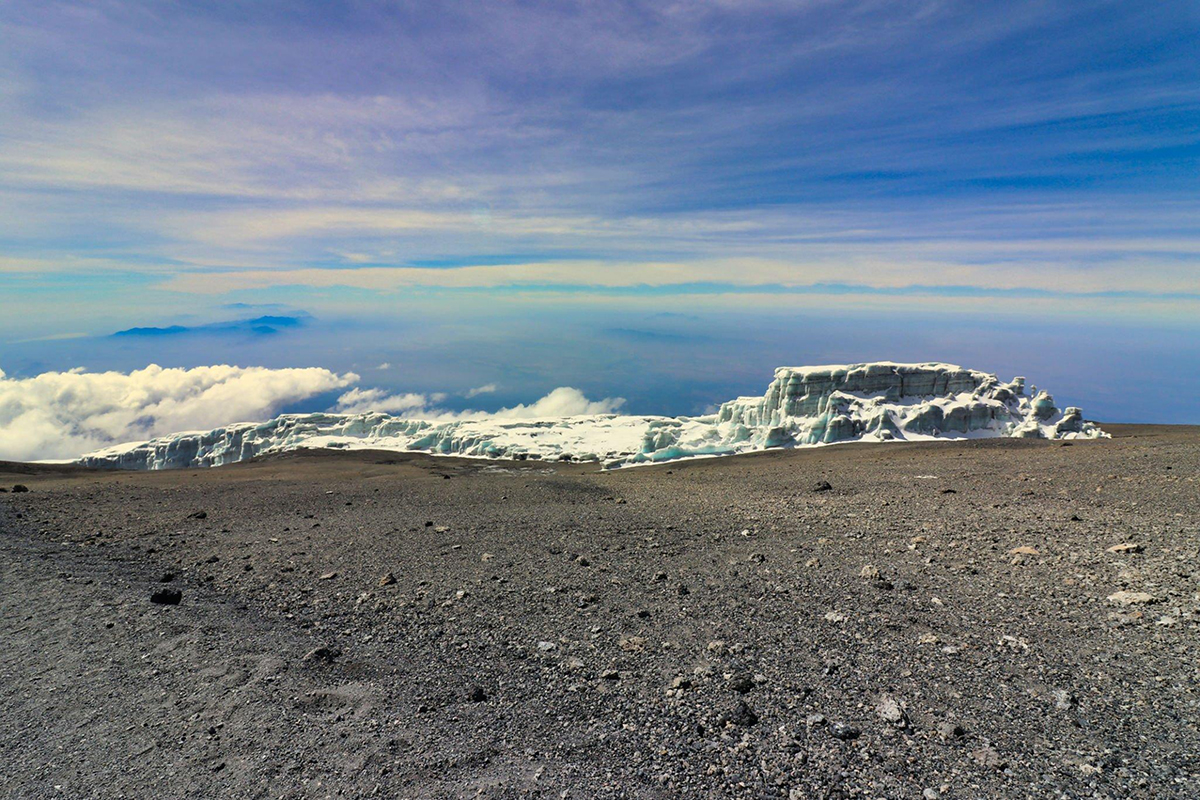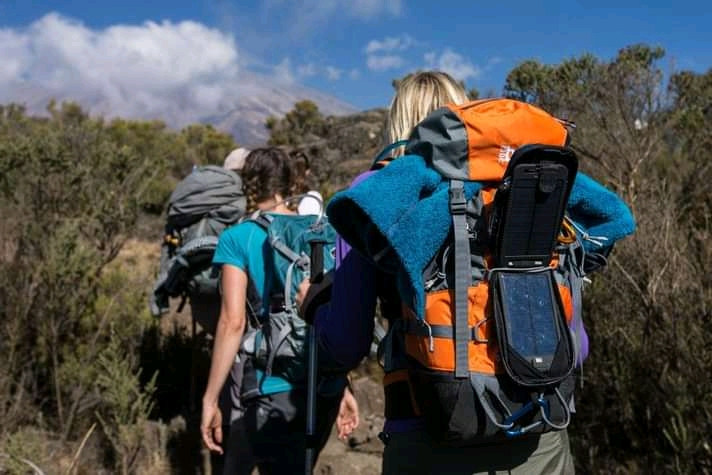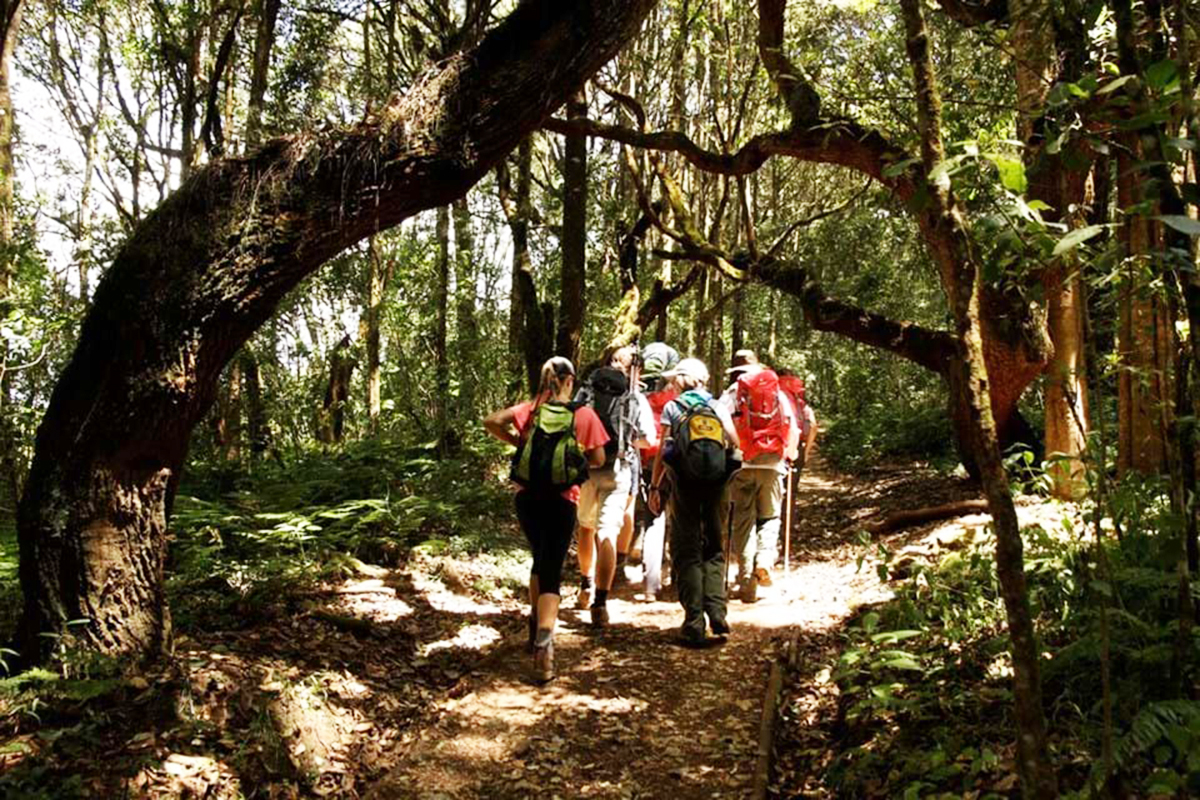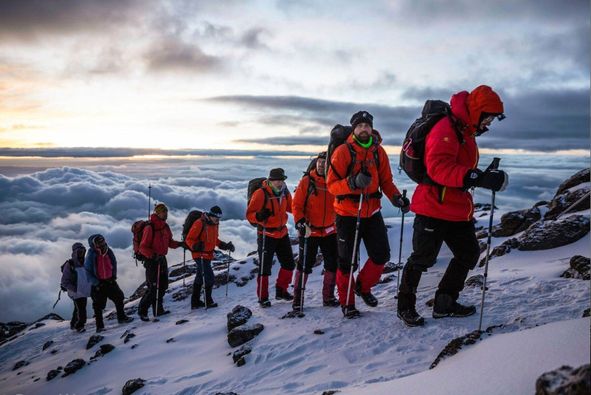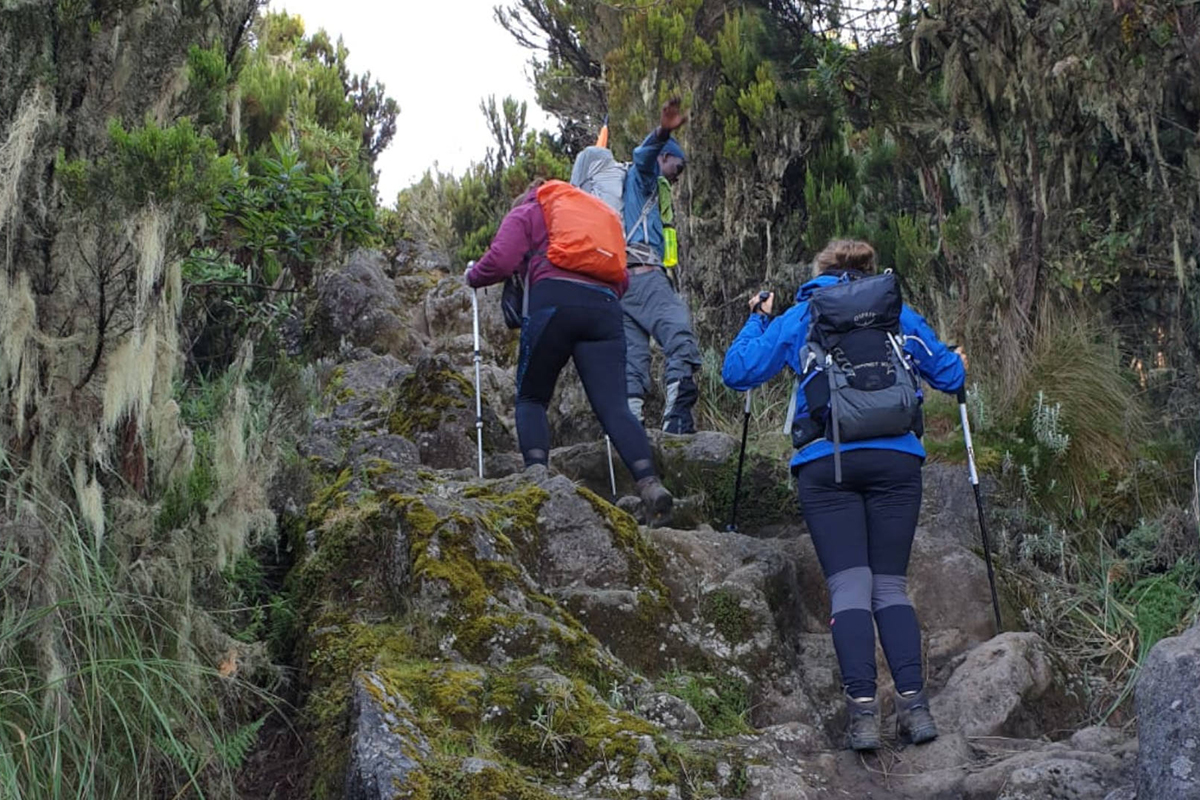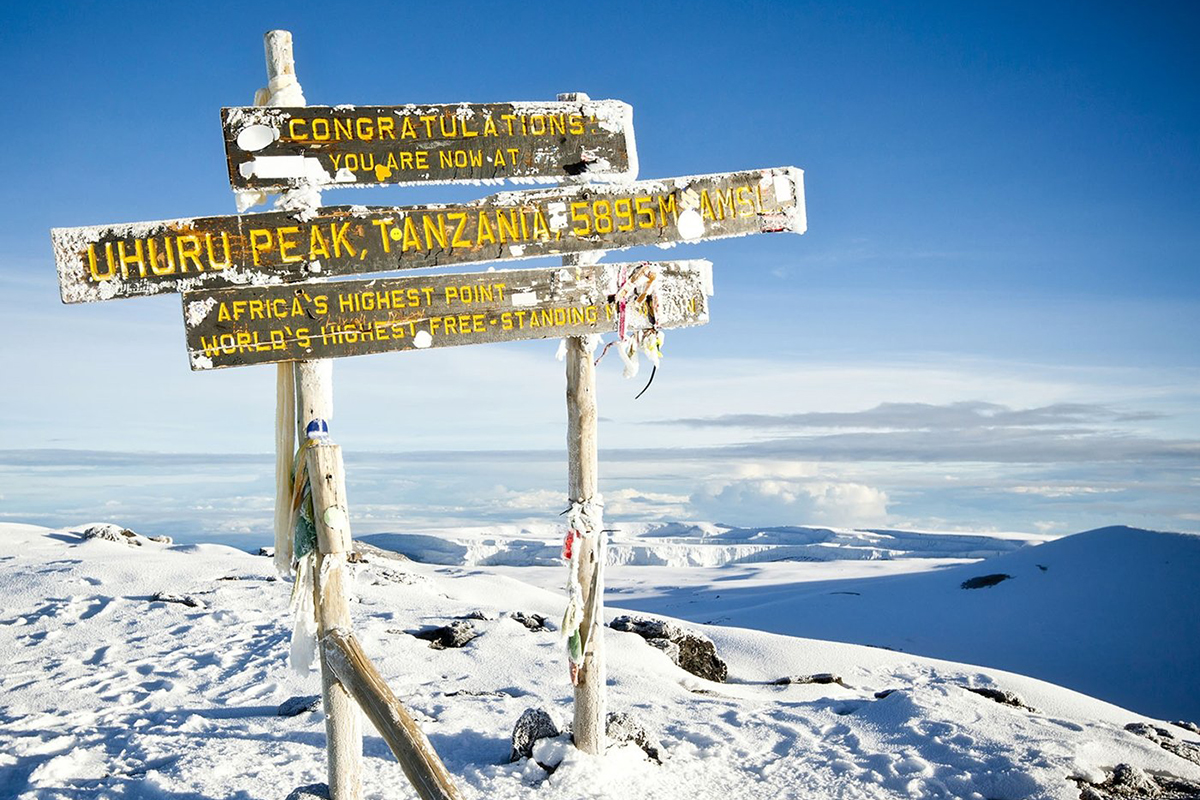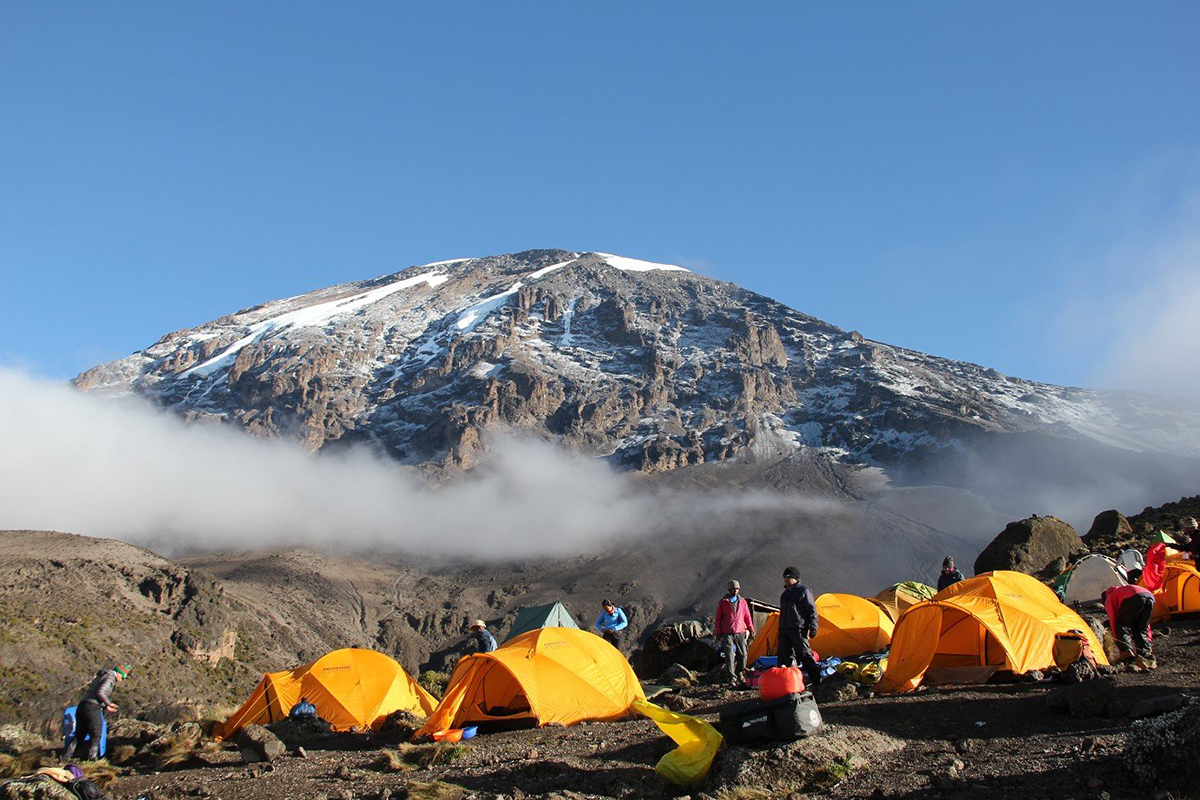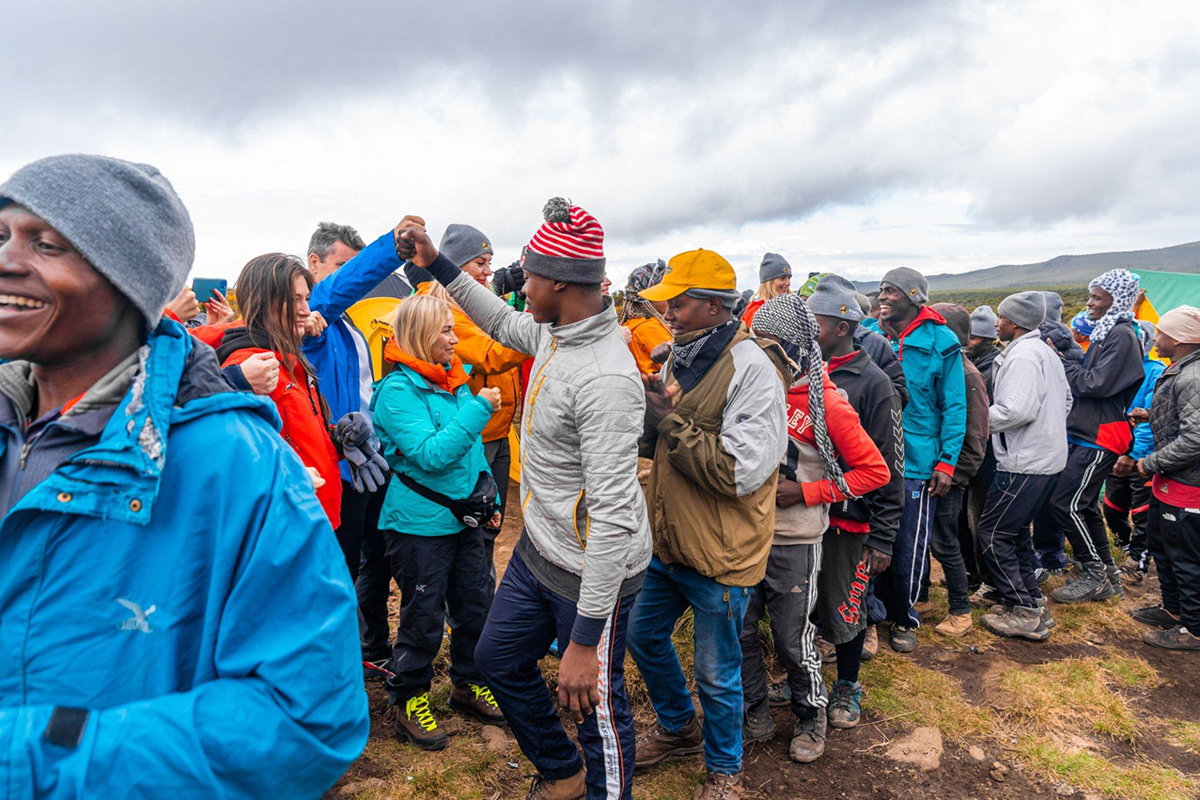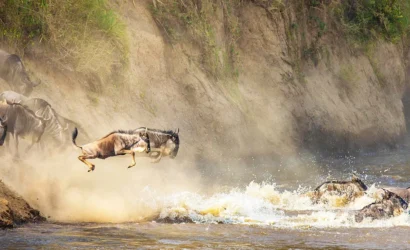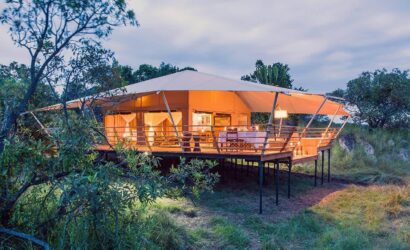5nights plus 2 nights in hotel
-
Transfer from Airport to Hotel then to Machame Gate , Depend on Group Size
-
Mid Range Hotels and Camps
-
Arusha
-
July , August , September, December; January , Februaty
-
Kilimanjaro Climbing
-
All meals
-
English, Spanish, French, Chinese
-
2-15
-
12
-
65
Visit
TARANGIRE NATIONAL PARK & NGORONGORO CRATER
Overview
The Lemosho route is one of our preferred routes due to its low traffic, beautiful scenery, and a high summit success rate. The Lemosho route starts off from the west, beginning with a long drive from Arusha to Londorossi Gate. From there, the first two days are spent trekking through the lush rainforest to Shira Plateau. The Lemosho route joins the Machame route at Shira 2 Camp and then follows the
same route through the southern circuit and descending at Mweka Gate.
Highlights
- Higher Summit Success Rate: The extra day at Horombo Hut for acclimatization significantly improves your chances of reaching the summit compared to the 5-day route.
- Diverse Habitats: The trek takes you through four distinct climate zones, starting in the lush Montane Forest, transitioning to the open Heathland and Alpine Desert, and culminating in the Arctic Summit zone. This rapid change in scenery provides a varied and memorable experience.
- Gradual Slope: The path is well-defined with a more gentle incline, making the initial days of the climb less strenuous.
- Scenic Diversity: The route takes you through multiple climate zones, from lush rainforest to the arctic summit.
- Climb High, Sleep Low" Acclimatization: The optional hike on Day 4 helps your body adjust to the altitude, a proven strategy for preventing altitude sickness.
Itinerary
You will be picked up from your hotel in Arusha town or Moshi town. A guide and a mountain support
crew will arrive at the hotel in the morning in order to meet you and hold another briefing, after which
you will travel by vehicle (roughly 3-4 hours) to Kilimanjaro National Park's western entrance, Londorossi
Gate (2,200 m). After the quick formality of acquiring climbing permits and registering with the search
and rescue service, the group will start trekking towards the first camp of the route, Mti Mkubwa Camp
(2,780 m). Raincoats are necessary on this day in particular, as you will be walking through rainforest. By the time you reach the camp, our professional mountain crew will prepare everything necessary, put tents and cook lunch for you. After lunch the group will depart on an acclimatization hike towards Shira
1 Camp that features a 300 meter gain in altitude, after which you will hike back down to Mti Mkubwa
Camp, where a hot dinner will be waiting.
Note: The acclimatization hike is an easy trek with a slight gain in altitude done in order to speed up the acclimatization process. You should take the acclimatization hikes very seriously. They help increase
your chances of successfully climbing Kilimanjaro and save you from the consequences of altitude
sickness.
This will be your first day at this altitude, so it is strongly recommended you heed the following
instructions from this point on:
Abstain from consuming alcohol and caffeine
Drink over 4 liters of bottled water daily (little by little, frequently)
Take a Diamox pill to help alleviate symptoms of altitude sickness. Most mountain climbers take
Diamox in the morning, before they start their ascent, in order to reduce discomfort associated
with altitude sickness. We recommend you consult your doctor prior to the trip in case of
potential allergies.
At night you may experience discomfort associated with acclimatization to the high altitude because of a
reduction in your waking breathing pattern, your body gets less oxygen than during the day. Taking
altitude into account, you may therefore start feeling sick and have a headache. Pay attention to your
own body and tell your guide if you start feeling any symptoms of altitude sickness.
Hiking time: 6.5 hours
Habitat: Moorland
After an early morning breakfast, you will begin your ascent out of the rainforest and into the heather
moorland zone. You will cross many streams and walk over a plateau that leads to Shira 2 Camp (3840m). At this campsite, you will be next to a stream and have a spectacular view of the Western Breach and its glaciers in the East. Similar to the first night, your tents will be set up prior to arriving the camp and the porters will prepare drinking and washing water for you. You will enjoy evening snacks then dinner prepared by our chef. Be prepared for a cold night as temperatures drop below freezing at this exposed camp.
Hiking time: 7 hours
Distance: Approximately 15 kilometers
Habitat: Semi desert
Following an early morning breakfast, you will leave the moorland environment and enter the semi
desert and rocky landscape. After 5 hours of walking east, you will be come face to face with the Lava
Tower (4630m). Packed lunches are served at the Tower and hikers have the option of climbing the
massive Lava Tower weather permitting. At this point of the hike, it is normal for hikers to start feeling
the effects from the altitude including headaches and shortness of breath.
After lunch, you will descend from Lava Tower (4630m) to the Barranco Campsite (3950m). The 6800m
descent gives hikers a huge advantage to allow their bodies to adjust to the conditions of high altitude.
The descent to camp takes around 2 hours to reach. It is located in a valley below the Breach and Great
Barranco Wall (“Breakfast Wall”). Drinking and washing water and dinner will be served as hikers view
the sunset.
Alpine Desert
Elevation: 3986m/13,077ft to 4034m/13,235ft to 4662m/15,295ft
Altitude gained: 676m
After breakfast, we continue on a steep ridge up to the adventurous Barranco Wall to the Karanga Valley and the junction, which connects with the Mweka Trail. This is one of the most impressive days to see the power, agility, and strength of your crew zip over this wall with what appears to be such ease. We continue up toward Barafu Camp, and once reached, you have now completed the South Circuit, which offers a variety of breathtaking views of the summit from many different angles. An early dinner and rest as we prepare for summit night. Overnight at Barafu Camp.
down | 5-6hrs | Glaciers, Snow Capped Summit
Elevation: 4662m/15,295ft to 5895m/19,341ft
Altitude gained: 1233m
Descent to 3106m/10,190ft
Altitude lost: 2789m
Excitement is building as morning comes with an early start between midnight and 2 a.m. This is the most mentally and physically challenging portion of the trek.
We continue our way to the summit between the Rebmann and Ratzel glaciers trying to stay warm and focused on the amazing sense of accomplishment that lies ahead. With a switchback
motion in a northwesterly direction and ascend through heavy scree towards Stella Point on the crater rim. You will be rewarded with the most magnificent sunrise during your short rest here.
Faster hikers may view the sunrise from the summit. From here on, your remaining 1 hour ascent to Uhuru Peak, you are likely to encounter snow all the way.
Congratulations, one step at a time, you have now reached Uhuru Peak, the highest point on Mount Kilimanjaro and the entire continent of Africa!
After photos, celebrations, and maybe a few tears of joy, we take a few moments to enjoy this incredible accomplishment. We begin our steep descent down to Mweka Camp, stopping at
Barafu for lunch and a very brief rest. We strongly recommend gaiters and trekking poles for uncooperative, loose gravel, and volcanic ash terrain. Well-deserved rest awaits you to enjoy your
last evening on the mountain. Overnight Mweka Camp.
Hiking time: 8 hours to reach Uhuru Peak, 7-8 hours to descend to Mweka
Distance: Approximately 7 kilometers ascent and 23 kilometers descent
Habitat: Stone scree and ice-capped summit
Your guide will wake you around 23:30 for tea and biscuits. You will then begin your summit attempt.
The route heads northwest and you will ascend over stone scree. During the ascent, many hikers feel that this is the most mentally and physically challenging part of the climb. In about 6 hours, you will reach Stella Point (5685m), located on the crater rim. After enjoying the magnificent sunrise, you will continue ascending for about 2 hours on a snow-covered trail to Uhuru Peak (5895m). Reaching the summit of Mt. Kilimanjaro is a lifetime accomplishment! You will be able to spend a short time on the summit taking photographs and drinking tea before the descent to Barafu begins. The hike down to Barafu Camp takes about 3 hours.
At camp, you will rest and enjoy a hot lunch in the sun. After eating, you will continue descending down to Mweka Hut (3100m). The Mweka Trail will lead you through the scree and rocks to the moorland and eventually into the rain forest. Mweka Camp (3100m) is located in the upper rain forest, so fog and rain
should be expected. You will have a dinner, wash, and rest soundly at camp.
Hiking time: 3 hours
Distance: Approximately 15 kilometers
Habitat: Forest
Following a well-deserved breakfast, your staff will have a big celebration full of dancing and singing. It
is here on the mountain that you will present your tips to the guide, assistant guides, chef(s), and porters. After celebrating, you will descend for three hours back to Mweka Gate. The National Park requires all hikers to sign their names to receive certificates of completion. Hikers who reach Stella Point (5685m) receive green certificates, and hikers who reach Uhuru Peak (5895m) receive gold certificates. After receiving certificates. You will be served a hot lunch, then you will drive to Arusha town to your hotel for long overdue showers and more celebrations, or you will drive to the airport for your
flight.
Cost
The Cost Includes
- Kilimanjaro trekking according to the itinerary
- Professional, English-speaking guide
- Mountain crew (cook & porters)
- Overnight stays in mountain huts
- Meals according to the itinerary
- Drinking water, tea & coffee
- All national park fees
- Transfer from the hotel to the National park gate and back
The Cost Excludes
- International Flights
- Optional activities
- Alcoholic and soft drinks
- Visa fees
- Tips
- Personal spending money for souvenirs etc.
- Travel insurance
- Tipping suggestion $10 a day per vehicle. The tip should be handed to the driver/guide at the end of the
- trip
FAQs
The success rate for the Machame Route is one of its most attractive features. The 7-day itinerary has an average summit success rate of 85-90%, while the shorter 6-day version has a rate of around 70-75%. The longer itinerary is highly recommended because it provides better acclimatization, significantly increasing your chances of reaching the peak.
The Machame Route is considered a moderately difficult trek. It is more challenging than the Marangu Route due to steeper sections, longer daily hikes, and a camping-based itinerary. However, it’s very manageable for individuals with good physical fitness and no prior high-altitude experience. Key challenges include:
-
Steep sections on days 2 and 3.
-
The Barranco Wall, a non-technical but steep rock face that requires a bit of scrambling.
-
The long and challenging summit day, which can take 12-15 hours.
The “climb high, sleep low” principle is a fundamental strategy for altitude acclimatization. It involves hiking to a higher elevation during the day and then descending to a lower camp to sleep. The Machame Route is an excellent example of this. On Day 3, you hike up to Lava Tower (4,630m / 15,190ft) before descending to Barranco Camp (3,900m / 12,800ft) for the night. This allows your body to start adapting to the high altitude without the added stress of sleeping there, which is a major factor in the route’s high success rate.
The Machame Route is often contrasted with the Marangu Route, and they have several key differences:
-
Accommodation: Machame is a camping route where you sleep in tents every night. Marangu is the only route with communal huts.
-
Success Rate: Machame (especially the 7-day version) has a much higher summit success rate due to its superior acclimatization profile.
-
Scenery: Machame is a more scenic route that traverses the mountain in a non-linear path, offering diverse landscapes and views. Marangu follows the same trail for both the ascent and descent, which can feel repetitive.
-
Difficulty: Machame is considered more physically demanding than Marangu due to its steeper sections and longer hiking days.
The main difference is the addition of an extra acclimatization day. In the 6-day itinerary, you spend an extra night at Horombo Hut (Day 3), allowing your body more time to adjust to the altitude. This extra day significantly improves your chances of a successful summit, often raising the success rate by 10-15% or more.

